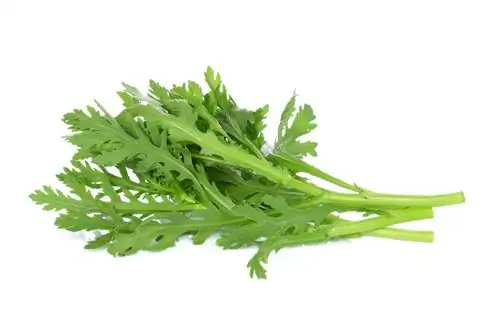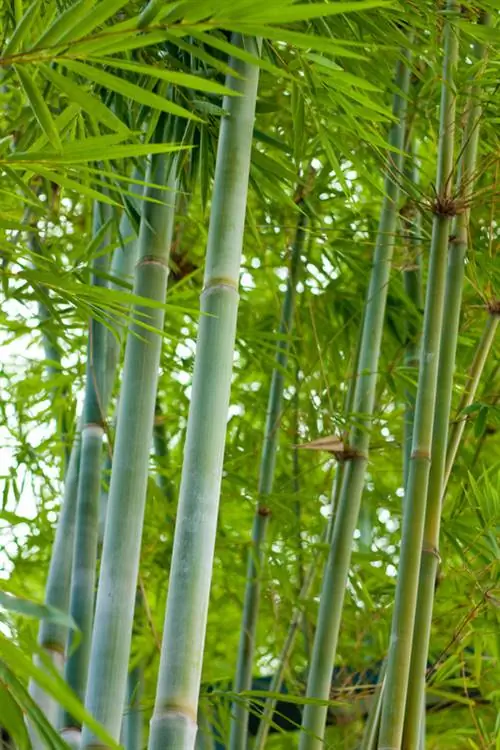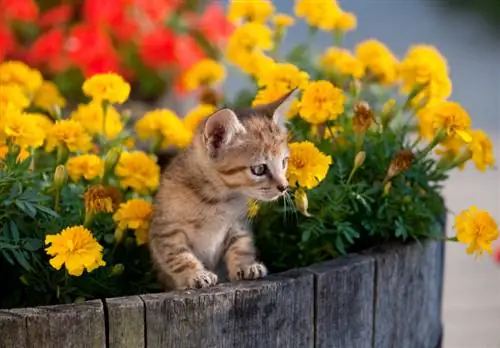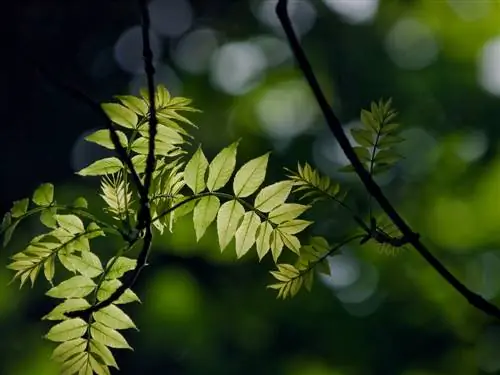- Author admin [email protected].
- Public 2023-12-16 16:46.
- Last modified 2025-01-23 11:22.
A look at the leaves says more than a thousand words - right? While the flowers of chrysanthemums immediately attract attention, the leaves often play a secondary role or are even overlooked. A good reason to take a closer look
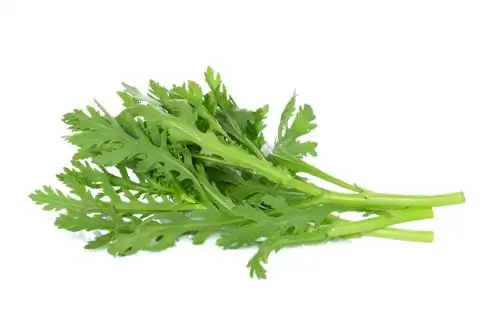
What do the leaves of chrysanthemums look like and are they edible?
The leaves of chrysanthemums are palmate, lobed and serrated at the edge. They sprout in spring and are light green in color, fading to dull green over time. They can be susceptible to diseases and pests, but are usually inedible to slightly poisonous.
What shape do the leaves of chrysanthemums have?
The leaves of the chrysanthemums, which are arranged alternately around the shoots, arehand-shapedandlobed Depending on the type and variety of chrysanthemum, they can be rather weak or be heavily feathered. They cling to long stems and are usually serrated at the edge.
When do chrysanthemum leaves sprout?
The leaves of the chrysanthemums show their urge to sprout over the course ofspring. Only when it is warm enough - usually around mid-April - do they come to the surface and signal the start of the chrysanthemum season. Depending on the location and type of chrysamthemum, the leaves may emerge sooner or later. The leaves may not emerge until May.
How are the leaves of chrysanthemums colored?
When freshly sprouted, the leaves of the chrysanthemums have a light green color, which will change to amatte green in the coming weeks. In autumn the leaves gradually turn yellowish before they are finally shed. This is usually not the case until November.
Are the leaves of chrysanthemums prone to disease?
Depending on location and care, chrysanthemums aresusceptible to diseases. Leaf spot disease often occurs on chrysanthemums. As the name suggests, you can recognize these by the fact that yellowish-brown spots initially appear on the leaves, which later turn black. With the help of regular fertilizer applications (€6.00 on Amazon) (alternatively long-term fertilizer) you can strengthen and protect your chrysanthemum.
Do pests eat the leaves of chrysanthemums?
The leaves of chrysanthemums are also interesting for pests and they eat themgladlySnails do not stop at chrysanthemums, especially when they are budding. When an infestation occurs, you can usually find harmful insects such as spider mites, whiteflies and aphids on the undersides of the leaves. To reduce the risk of pest infestation, the chrysanthemum should be protected from stress. If it is stressed, for example by too high a temperature or too little water, its ability to withstand these pests decreases.
Are chrysanthemum leaves edible?
Chrysanthemum leaves arenot always edible. The majority of chrysanthemums are inedible or even slightly poisonous. Only the so-called edible chrysanthemums are edible and even tasty. They are consumed in Japan, for example, and impress with their tart-bitter taste in Asian dishes.
Tip
It's better to be safe than sorry when eating chrysanthemum leaves
Although there is always evidence that chrysanthemum leaves are edible, you should be careful. The chrysanthemums commercially available in this country generally do not have much in common with the annual edible chrysanthemum (Chrysanthemum coronarium). Therefore, be sure to pay attention to a clear declaration before you try the leaves!

